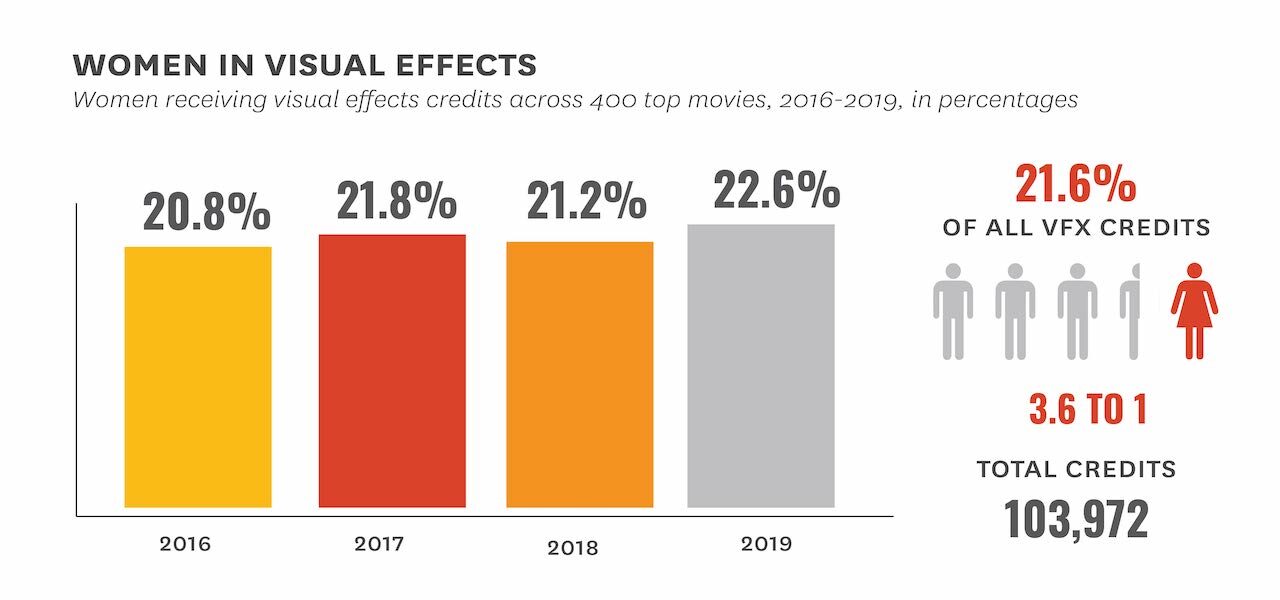
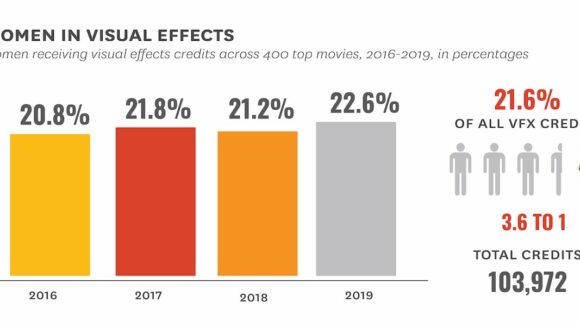
Report: Women Only Occupy Around A Fifth Of VFX Roles
A major report has confirmed what the industry knew already: that women are under-represented in vfx roles. Through detailed analysis, it gives the problem new definition.
“Invisible in Visual Effects” is the second study to emerge from a partnership between Dr. Stacy L. Smith, the Annenberg Inclusion Initiative, and Women in Animation, following 2019’s “Increasing Inclusion in Animation.” It does for vfx what that one did for animation, providing granular data about women’s prevalence in different parts of the industry and suggesting ways in which problems might be remedied — all with the help of clear, colorful graphs.
The report looked at 103,972 individuals who worked in vfx positions across the 400 top films from 2016 to 2019. It also examined the leadership at the 60 top companies behind these films, as well as recent vfx nominees and winners at the Oscars and Visual Effects Society Awards. Finally, 51 women in vfx and 31 industry decision makers were interviewed.
Below are a few takeaways, figures, and graphs from the document, which can be read in full here.
- Women in vfx are in a small minority, which isn’t growing. Across the 400 films, women took 21.6% of all vfx credits. This figure didn’t change significantly over time: it was 20.8% in 2016 and 22.6% in 2019.
- They are even less numerous in senior roles. Women held 16.2% of these positions in 2016–19. But there was great variation between roles: they accounted for 46.7% of vfx producers but only 2.9% of vfx supervisors. The report noted that women would benefit if the pay and profile of vfx producers were boosted, and if the pipeline to vfx supervisor was strengthened by objective criteria for promotion and policies to nurture young talent.
- Few women lead vfx studios. Of the 416 executives at the 60 companies, 26.9% were women. This number shrank to 11.2% when only the highest-level executives were considered.
- Very few women win major vfx awards. In the last decade, 211 people have been nominated for an Oscar for best vfx, only one of which is a woman (she won). Only 9.8% of VES Award winners in the same period are women.
- Women of color are even less visible. They filled 2.5% of leadership roles — and 0.5% of vfx supervisor positions — on the 400 films, and 5.5% of executive roles at the 60 companies. They accounted for 1.6% of VES winners. More than half of women of color who were interviewed “indicated that their racial/ethnic background contributed to difficulties in their work,” for example because they were treated unfairly or patronizingly.
- Interviewees gave various related reasons for the lack of female vfx supervisors. Some mentioned the prevalence of men in the industry; some said workplace cultures disadvantage women, for example by failing to accommodate needs around family; some talked about leadership perceptions, suggesting for instance that women are seen as unsuitable for supervisory roles.




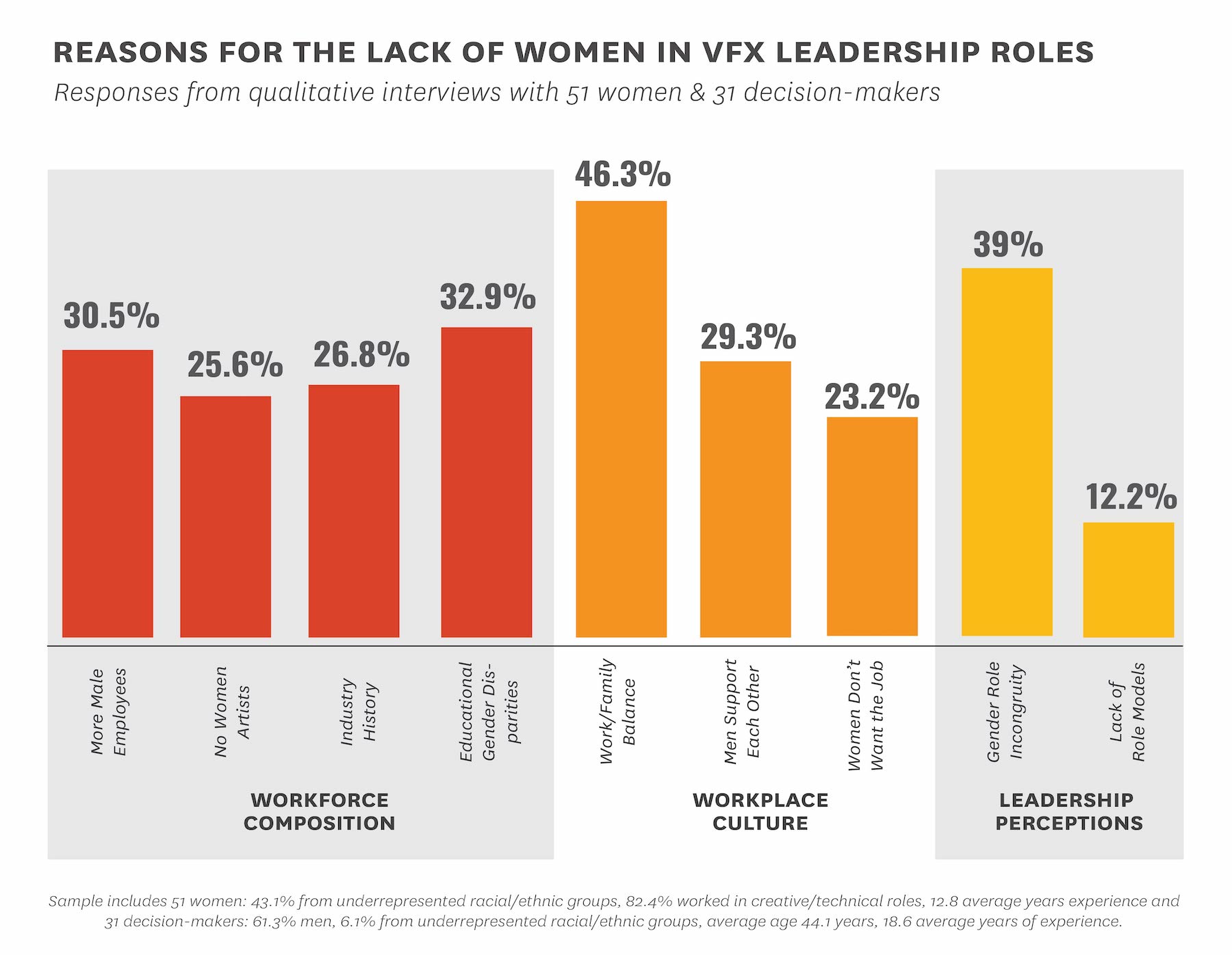
The study proposes several measures to boost the number of women in leadership and other roles, including:
- Establishing clear, unbiased criteria for judging candidates’ skills. Women should not be judged “against their male counterparts or some unknown ideal.” This will help shake off preconceptions that women lack the right traits for leadership.
- Rethinking workplace cultures. When the environment is “stereotypically masculine,” evidence suggests women may advance less far. Interviewees noted that the industry “is steeped in a ‘nerdy’ historical context.” Now “nurturing a new image is essential.”
- Addressing family needs. Tight production schedules imposed by clients makes it hard to balance vfx work and caregiving; women suffer most as a result. The specific needs of other marginalized groups, such as disabled staff, also require more attention. “The practices that the Covid-19 pandemic made possible may be one place to start.”
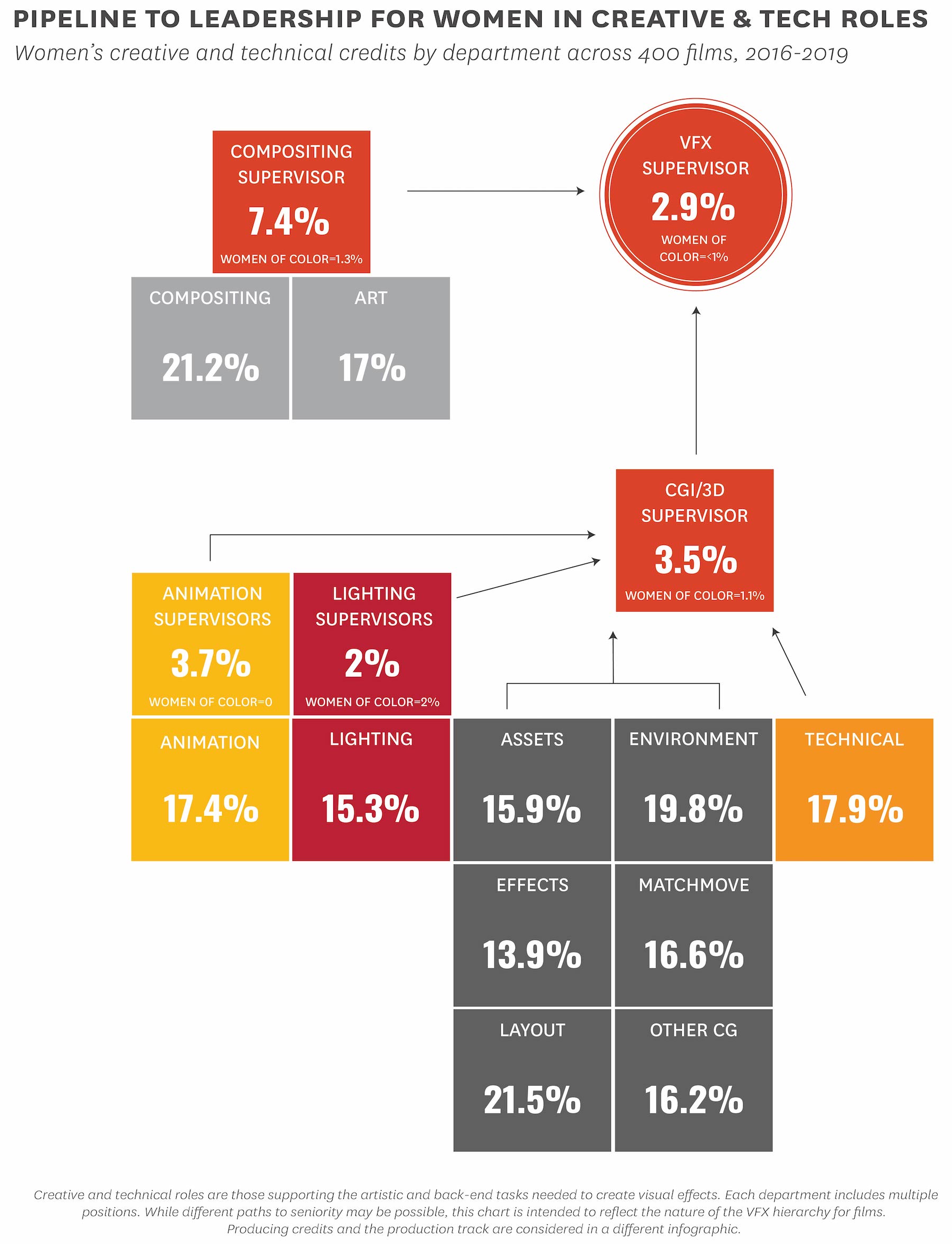
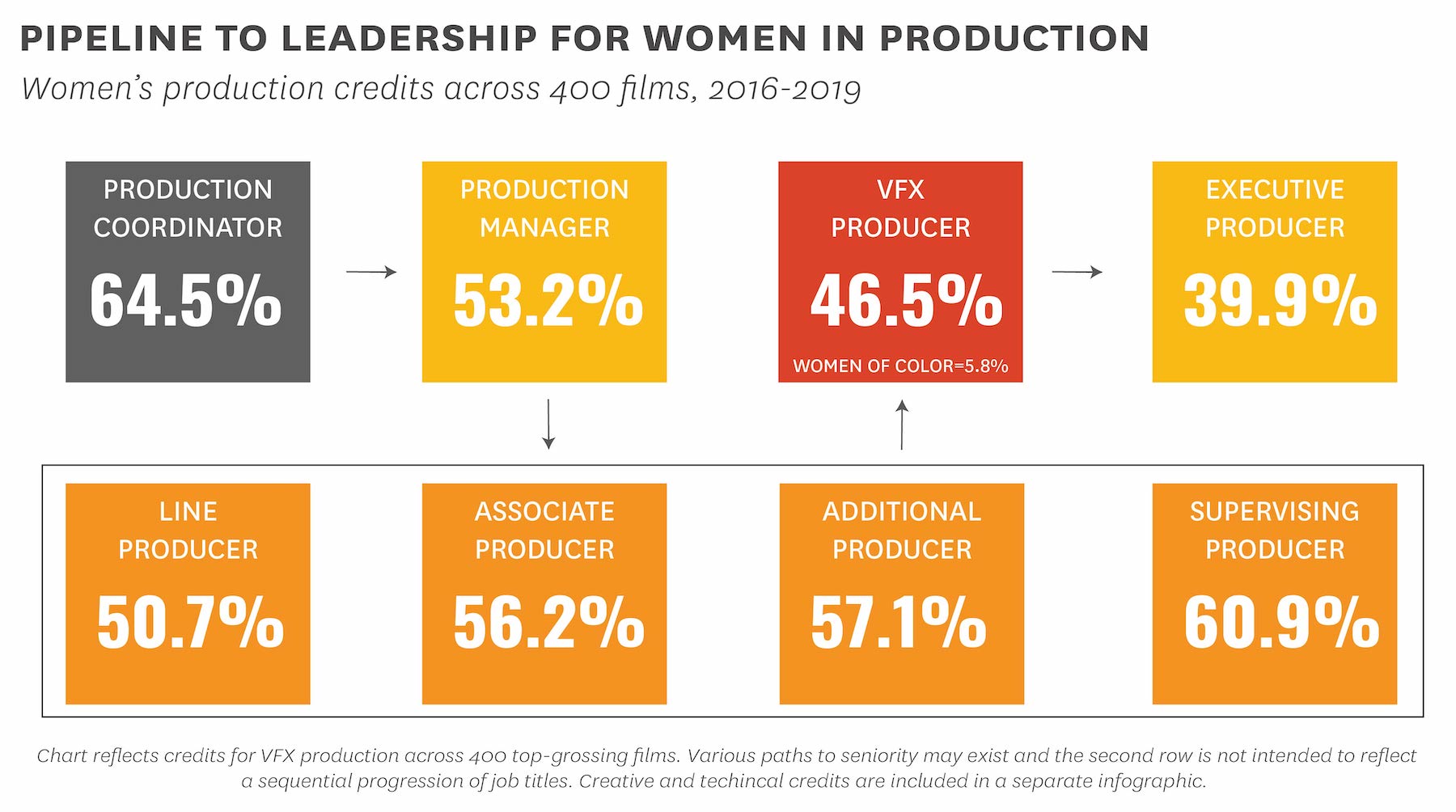

.png)